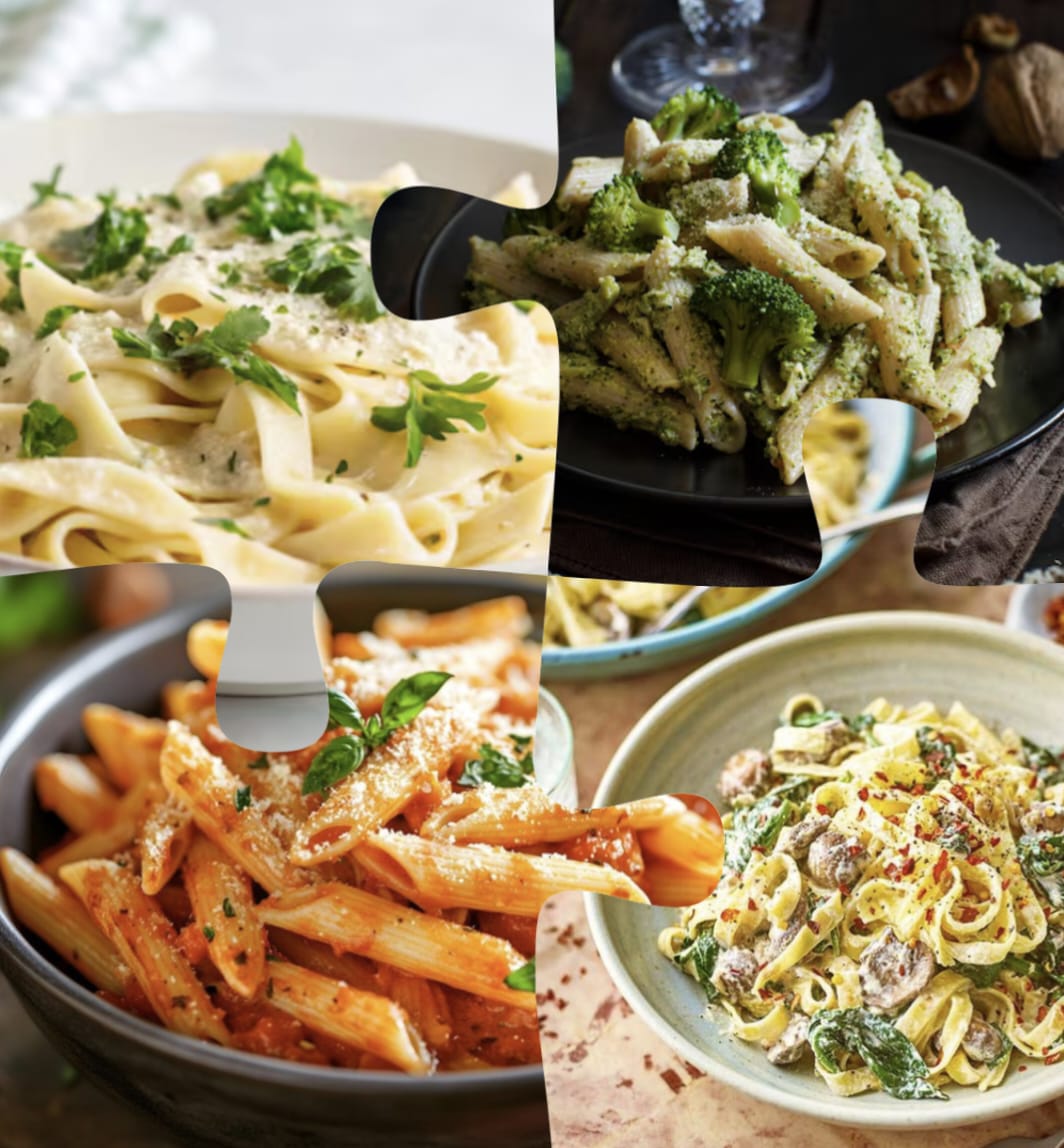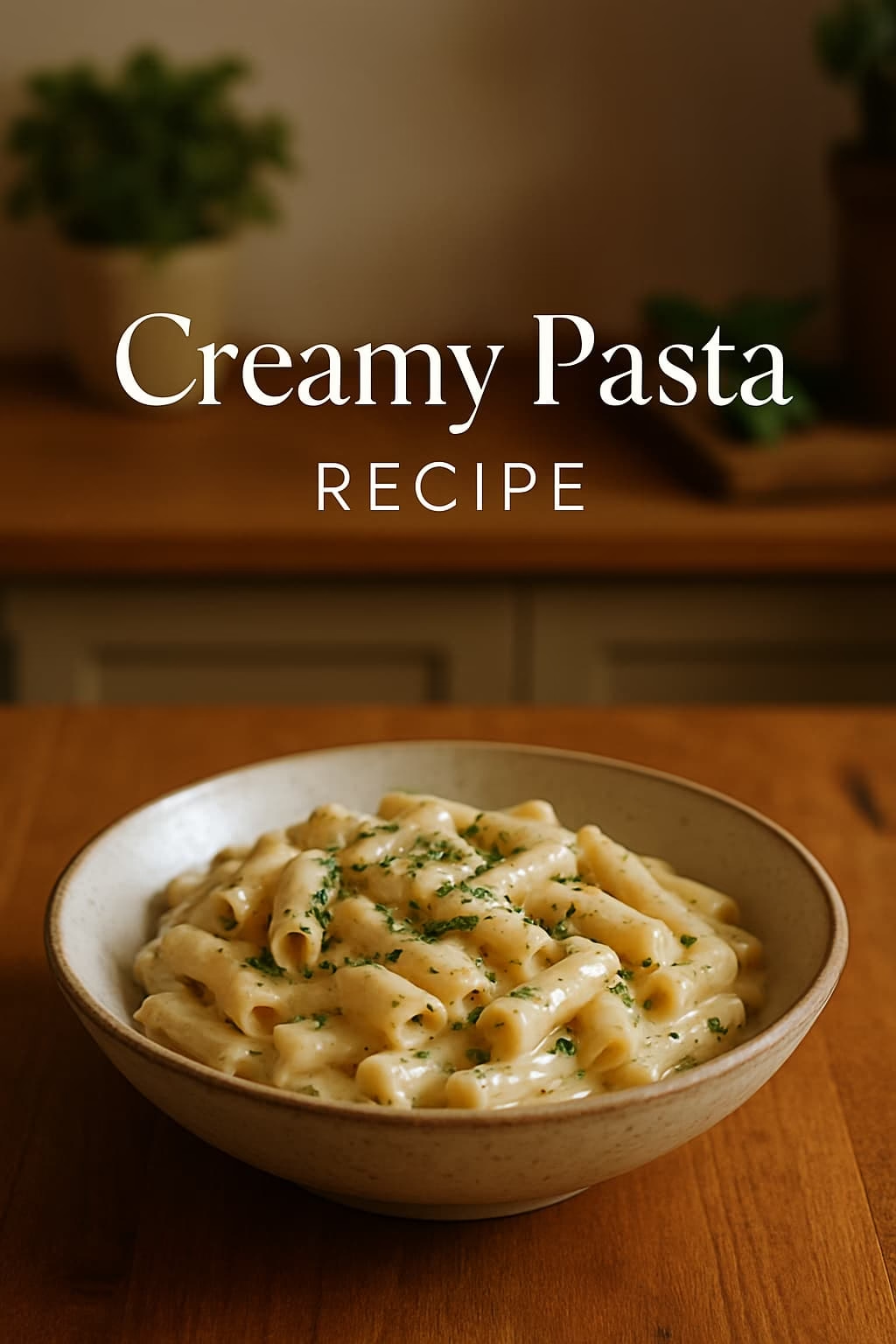
Discover the magic of plant-based Italian pasta recipes that bring comfort, health, and global flavors to your plate. Easy, vegan-friendly, and infused with love, these dishes celebrate tradition with a modern twist.
Table of Contents
Introduction – When Pasta Becomes Poetry
There is something timeless about a steaming bowl of pasta. It is not just food, it is a story — a love letter written with flour, water, and a sprinkle of magic. The Italian countryside, with its olive groves, vineyards, and sunlit kitchens, has gifted the world a cuisine that feels like a warm embrace.
“Life is a combination of magic and pasta.” (La vita è una combinazione di magia e pasta.)
Today, we bring that magic into our homes — but with a twist. Welcome to the world of plant-based Italian pasta recipes. These recipes carry the soul of Italy while embracing the health-conscious, sustainable choices of today.
From creamy vegan Alfredo to spicy arrabbiata made with fresh tomatoes, every recipe here is designed to fill your heart as much as your stomach. Because pasta is not just dinner — it is therapy.
Why Plant-Based Italian Pasta is Loved Worldwide
Italian food has always been about simplicity. A few fresh ingredients, a drizzle of olive oil, and a touch of love are enough to create unforgettable flavors. Plant-based Italian dishes go a step further — they are light on the body, kind to the planet, and still full of richness.
Imagine twirling strands of spaghetti coated with a silky sauce made of cashews instead of cream, or tasting the earthiness of mushrooms folded into risotto. These are flavors that respect tradition while embracing modern living.
“Happiness is homemade.” (La felicità è fatta in casa.)
The Soul of Plant-Based Italian Pasta
Before diving into recipes, let’s pause and understand why pasta holds such a special place in the Italian heart. Pasta is not just a dish; it’s an expression of culture. From Naples’ fiery tomato sauces to Genoa’s green basil pesto, every region of Italy has its own pasta story.
For vegetarians and vegans, pasta offers endless possibilities. Olive oil, herbs, fresh vegetables, nuts, and grains form the base of many Italian sauces. That’s why plant-based versions feel so natural — they don’t take away from the authenticity; they add to it.
“The table is a place of sharing.” (La tavola è un luogo di condivisione.)
4 Plant-Based Italian Pasta Recipes
Let’s now step into the kitchen. Below are four beautiful recipes that combine tradition with health and creativity.
1. Creamy Vegan Alfredo Pasta
When we think of comfort, Alfredo pasta immediately comes to mind. The traditional version uses heavy cream and cheese, but our plant-based recipe is just as rich — thanks to cashews.
Ingredients:
- 2 cups cashews (soaked for 2–3 hours)
- 3 cloves garlic
- 1 tbsp olive oil
- 2 cups plant-based milk (almond/soy/oat)
- Salt & pepper to taste
- Spaghetti or fettuccine pasta
- Fresh parsley for garnish
Method:
- Cook pasta according to package instructions.
- Blend soaked cashews, garlic, and plant-based milk until creamy.
- Heat olive oil in a pan, pour the sauce, add salt and pepper.
- Toss the cooked pasta in the sauce.
- Garnish with parsley and serve warm.
“Simplicity is the ultimate sophistication.” (La semplicità è la massima sofisticazione.)
2. Spicy Arrabbiata Pasta (Vegan-Friendly)
Arrabbiata means “angry” in Italian — because this sauce is fiery, bold, and unapologetic.
Ingredients:
- 400g penne pasta
- 5 ripe tomatoes (blended into puree)
- 4 cloves garlic
- 1 tsp chili flakes
- 2 tbsp olive oil
- Salt to taste
- Fresh basil leaves
Method:
- Heat olive oil in a pan, add garlic and chili flakes.
- Pour in the tomato puree and cook for 10 minutes.
- Season with salt.
- Add boiled penne pasta and toss well.
- Garnish with basil leaves.
“The simplest dishes are often the best.” (I piatti più semplici sono spesso i migliori.)
3. Vegan Pesto Pasta with Global Twist
Traditional pesto is made with basil, pine nuts, and parmesan cheese. Our plant-based version replaces parmesan with nutritional yeast — and we add a little jalapeño for a global touch.
Ingredients:
- 2 cups fresh basil leaves
- ½ cup walnuts or almonds
- 2 cloves garlic
- 1 jalapeño (optional, for spice)
- 2 tbsp nutritional yeast
- ½ cup olive oil
- Salt to taste
- Linguine or spaghetti pasta
Method:
- Blend basil, nuts, garlic, jalapeño, nutritional yeast, and olive oil into a paste.
- Cook pasta, reserve some boiling water.
- Mix pesto with pasta, adding a little pasta water to loosen the sauce.
- Garnish with extra basil.
“To eat is to live twice.” (Mangiare è vivere due volte.)
4. Mushroom & Spinach Whole Wheat Pasta
This dish is earthy, wholesome, and full of fiber — a perfect balance between indulgence and health.
Ingredients:
- 300g whole wheat pasta
- 200g mushrooms (sliced)
- 2 cups spinach leaves
- 3 cloves garlic
- 2 tbsp olive oil
- Salt & pepper
- Lemon juice
Method:
- Heat olive oil in a pan, sauté garlic and mushrooms.
- Add spinach and cook until just wilted.
- Season with salt, pepper, and lemon juice.
- Toss with boiled whole wheat pasta.
- Serve hot with a drizzle of olive oil.
“Good food is good mood.” (Il buon cibo è buon umore.)
Tips to Perfect Your Plant-Based Italian Pasta
- Always save pasta water – It contains starch and helps bind sauces.
- Use fresh herbs – Basil, parsley, oregano bring authentic Italian aroma.
- Experiment with nuts – Cashews for creaminess, walnuts for texture, almonds for sweetness.
- Don’t overcook pasta – Italians say pasta should be al dente (to the bite).
- Global twist works – Add roasted peppers, jalapeños, or even avocado for a new touch.
Health Benefits of Plant-Based Italian Pasta
- Heart-friendly: Olive oil and nuts provide healthy fats.
- Protein-rich: Whole grains, legumes, and nutritional yeast add protein.
- Low in cholesterol: No heavy cream or cheese needed.
- Gut health: Whole wheat pasta and vegetables add fiber.
- Sustainable: Plant-based meals reduce environmental footprint.
“Eat to live, don’t live to eat.” (Mangia per vivere, non vivere per mangiare.)
Story Behind the Flavors
Every dish carries a piece of Italy’s heart. Imagine a small trattoria in Rome, where a grandmother stirs tomato sauce with slow patience. Or a sunlit terrace in Genoa, where pesto is ground fresh in a mortar. These are not just recipes; they are memories of a country that lives through food.
By making them plant-based, we are not breaking tradition — we are carrying it forward in a way that suits our times. We are honoring Italy by sharing its love in a more inclusive, sustainable form.
Variations You Can Try
Fusion ideas: jalapeño pesto, curry-spiced arrabbiata, avocado Alfredo.
Add roasted veggies: zucchini, bell peppers, eggplant.
Switch pasta: try gnocchi, penne, linguine, or even gluten-free versions.
Play with sauces: tomato-based, nut-based, herb-based — endless options.
🌍 Travel Angle – Pasta Streets of Italy
Italy is not just a country; it is a living cookbook. Each region has its own pasta personality, shaped by its land and people.
- Naples (Napoli): The birthplace of spaghetti with tomato sauce. Walking through the streets of Naples, you’ll find pasta bubbling in every kitchen window.
- Bologna: Known for its tagliatelle and rich sauces, Bologna is a pasta lover’s dream.
- Genoa: Home to pesto, where basil grows fresh by the Ligurian coast.
- Rome: The land of classics like Cacio e Pepe and Carbonara (which can be made vegan too).
Travelers often say that the true way to experience Italy is not through monuments but through meals. Pasta is the bridge that connects strangers, families, and even generations.
“At the table, time stops.” (A tavola, il tempo si ferma.)
By cooking plant-based pasta at home, you are recreating a little piece of these Italian streets in your own kitchen.
🚫 Beginner’s Mistakes to Avoid in Pasta Making
Even though pasta looks simple, many beginners make small mistakes that take away its authentic taste. Let’s save you from them:
- Not salting the water enough – Italians say pasta water should taste like the sea.
- Adding oil to boiling water – A big no! It prevents sauce from sticking.
- Overcooking pasta – Pasta should be al dente, slightly firm when bitten.
- Using ketchup as sauce – Authentic pasta needs fresh tomatoes or passata, never ketchup.
- Forgetting pasta water – A splash of starchy water makes your sauce silky.
- Mixing too late – Always toss pasta in the pan with sauce, don’t pour sauce over pasta on a plate.
“Perfection is in the details.” (La perfezione è nei dettagli.)
By avoiding these mistakes, your pasta will not just be food — it will be art, just as Italians intended
Pasta as Love on a Plate
Cooking pasta is not about measurements alone; it’s about heart. It is about creating joy with the simplest of ingredients, and sharing it with those we love. When you sit at the table with a bowl of warm pasta, you’re not just eating — you’re participating in a centuries-old tradition of love, laughter, and life.
“Cooking is love made visible.” (Cucinare è amore reso visibile.)
So next time you crave comfort, try one of these plant-based Italian pasta recipes. Because every bite is a reminder that food is not just fuel — it is poetry.
Stay Connected with Flavors of Italy
Every recipe is not just food, but a little story served on a plate. If these Plant-Based Italian Pasta Recipes have touched your heart and taste buds, then let’s continue this delicious journey together.
🍝 Download my Free Summer Recipe eBook, where flavors meet love, and discover more dishes that carry the magic of simplicity, tradition, and soul.
Food has the power to travel across cultures, but what makes it unforgettable is the warmth and love behind it. So, let’s stay connected — because the world of Italian food has countless stories still waiting to be told.
✨ And always remember:
“Cooking is like love, it should be entered into with abandon or not at all.”
“Cucinare è come l’amore, bisogna abbandonarcisi completamente o non provarci affatto.”


